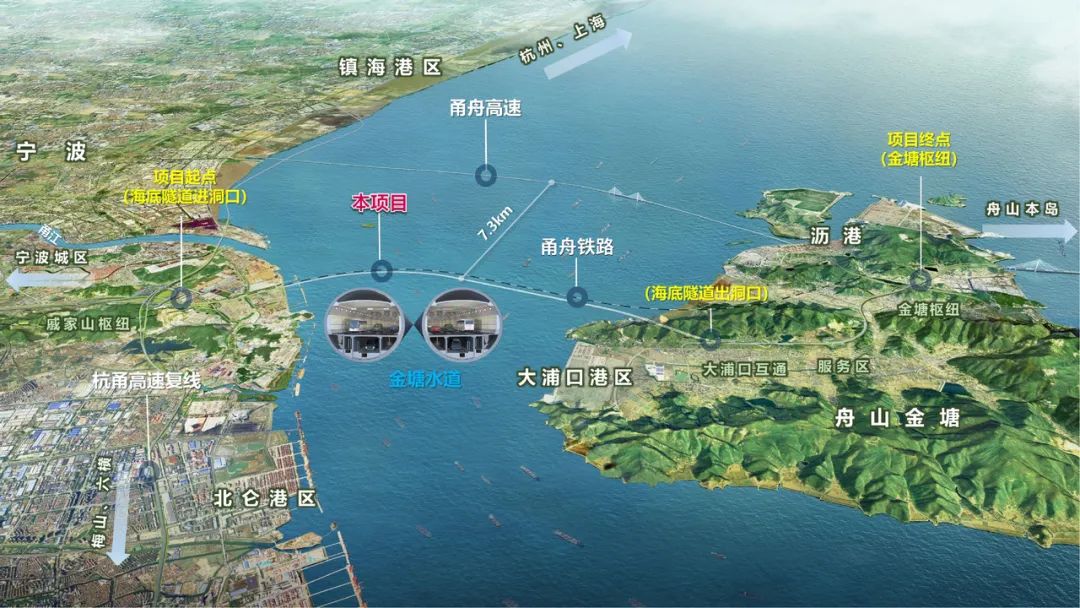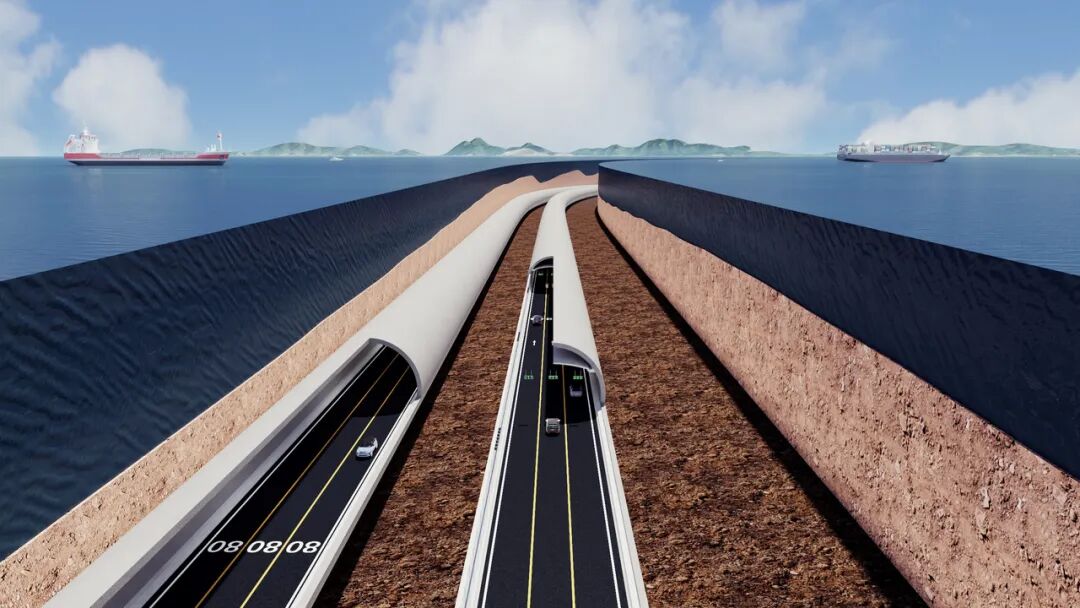On August 28, construction began on the Ningbo Qijiashan to Zhoushan Jintang section of the Zhejiang Yongzhou Expressway (Phase II of the Yongzhou Expressway Double Line Project) on Jintang Island in Zhoushan. Construction also commenced simultaneously on the Jintang Undersea Tunnel, the world's longest six-lane, two-way undersea expressway tunnel. This marks the beginning of a "dual channel" connecting Zhoushan to mainland China's expressways.
The Yongzhou Expressway Double Line, a crucial component of the Shanghai-Zhoushan-Ningbo Cross-Sea Corridor, is approximately 46 kilometers long and has a total investment of approximately 31.3 billion yuan. Construction will be divided into three sections. The Jintang to Dasha section, comprising the combined road-rail bridge, is scheduled for completion in 2028; the Ningbo Qijiashan to Zhoushan Jintang section is scheduled for completion in 2030; and the Beilun Haosifang to Qijiashan section is scheduled for completion in 2029. The first two sections are being led by Zhejiang Transportation Group. The Ningbo-Zhoushan Expressway Phase II project, from Qijiashan in Ningbo to Jintang in Zhoushan, is approximately 18 kilometers long and adopts six-lane, two-way expressway standards. The Jintang undersea tunnel, approximately 11.6 kilometers long, faces challenges such as high water pressure, severe corrosion, complex seabed geology, and precise underwater connections. The peak water pressure reaches 0.9 MPa, equivalent to an area the size of an adult's palm bearing the weight of a car.

The project team will focus on key technologies for the construction, management, and maintenance of ultra-long, ultra-large, and ultra-deep undersea tunnels, systematically promoting a comprehensive suite of intelligent highway shield construction technologies. By applying a high-precision guidance system, real-time monitoring and automated tunneling warnings will be achieved. Advanced technologies such as main drive status monitoring and automatic compensation will be introduced to comprehensively enhance the level of intelligent construction. Furthermore, the project will focus on key areas such as enhanced resilience, intelligent construction and operation and maintenance, disaster prevention and mitigation, and low-carbon energy conservation, striving to create a world-class landmark undersea highway shield tunnel project. In 2009, the Zhoushan Cross-Sea Bridge opened to traffic. Subsequently, traffic volume has grown at an annual rate of 6%-10%, significantly supporting Zhoushan's GDP growth from 53.99 billion yuan to 222.62 billion yuan in 2024 over the past 16 years. By the end of 2021, the main channel of the Ningbo-Zhoushan Port was fully operational, connecting to the Zhoushan Cross-Sea Bridge. This became my country's longest island-linking expressway and the largest cross-sea bridge complex, addressing Zhoushan's transportation shortcomings and fostering a robust "bridge economy."

The Yongzhou Expressway double-track line, upon completion, will join the existing Yongzhou Expressway to form a strategic "dual-channel" expressway corridor connecting Zhoushan to the mainland. The total mileage of the Zhoushan-Island Expressway will increase to approximately 120 kilometers, significantly alleviating traffic pressure on existing corridors and strengthening transportation links between Zhoushan and cities in the northern Yangtze River Delta, such as Ningbo, Hangzhou, and Shanghai. This will provide solid transportation support for the development of the Zhoushan Archipelago New Area, the River-Sea Transport Service Center, and the Zhejiang Free Trade Pilot Zone.

